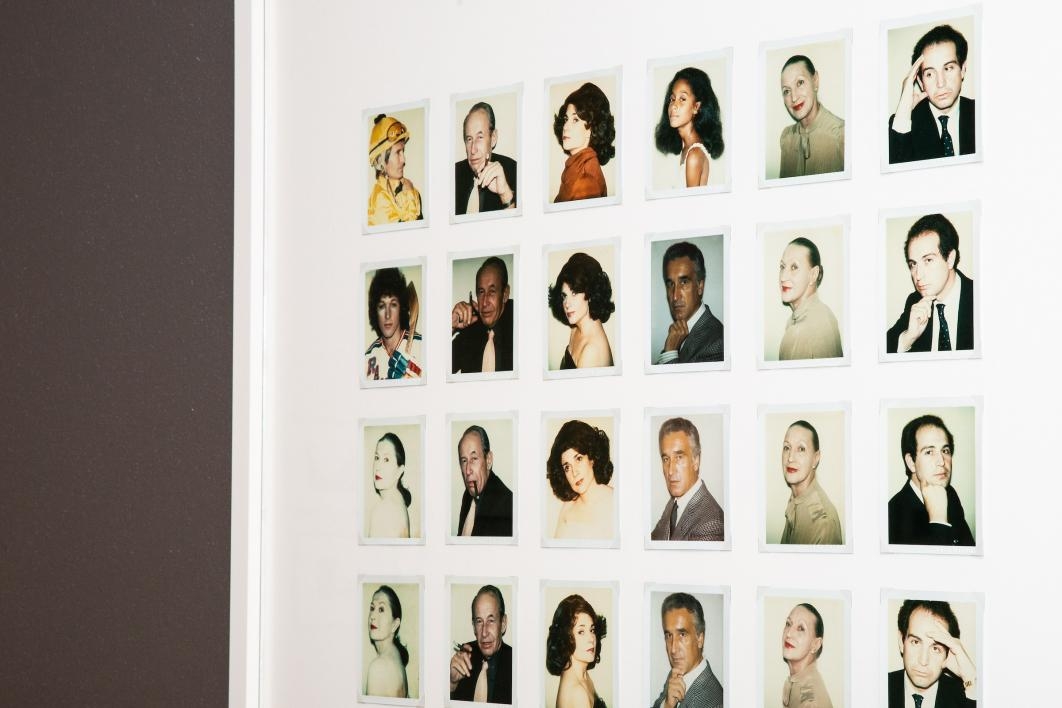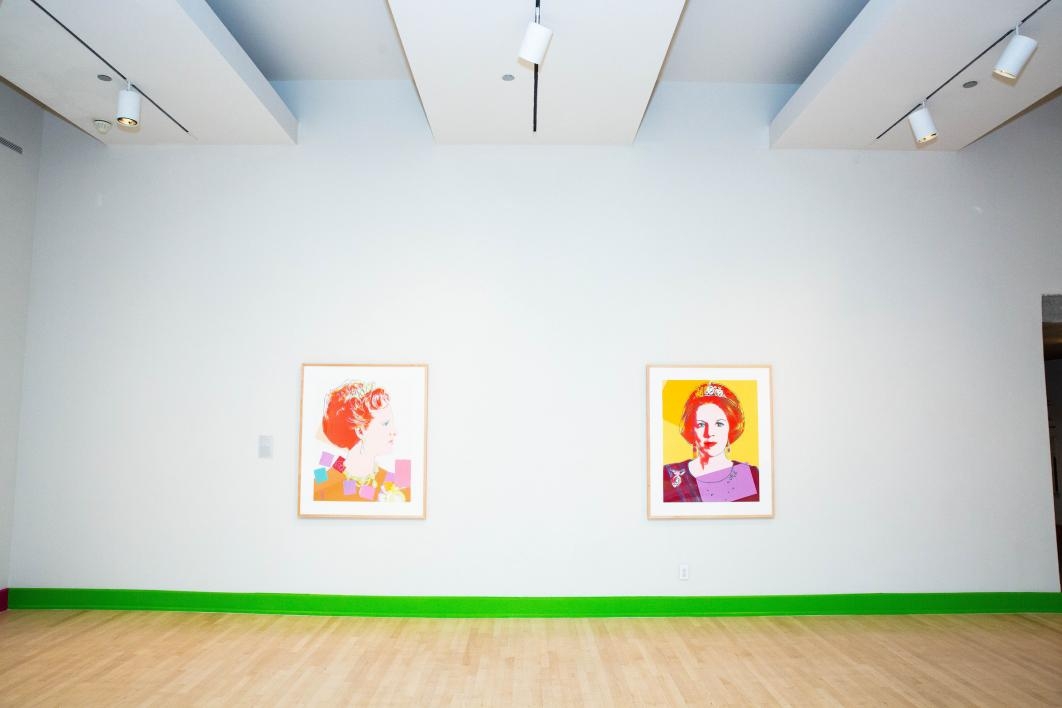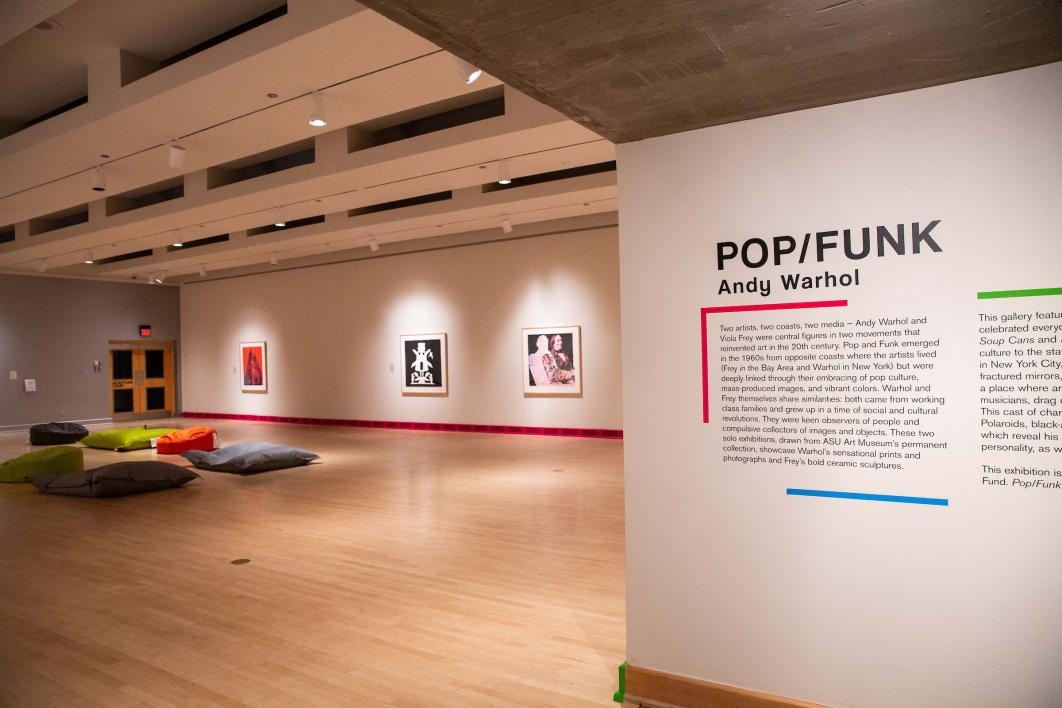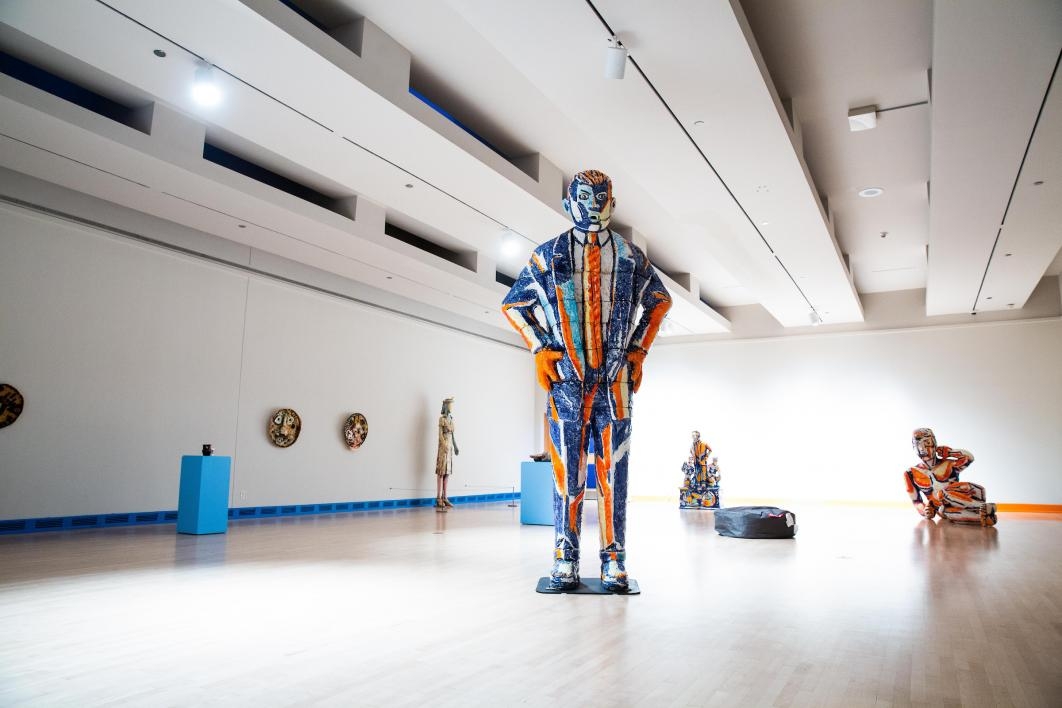ASU Art Museum showcases permanent collection in exhibit of Warhol works

The new exhibit at the Arizona State University Art Museum features two artists — one wildly famous and one less well-known — who were both important in the socially tumultuous mid-20th century.
“Pop/Funk: Warhol and Frey” is actually two solo exhibitions that celebrate art movements noted for elevating pop culture — a fitting theme because nearly all of the works are drawn from the museum’s permanent collection, which belongs to the public.
“Andy Warhol is one of the most well-known figures in modern art, and Viola Frey is less well-known so we’re hoping that people will come for Warhol and stay for Viola,” said Brittany Corrales, the curatorial coordinator for the ASU Art Museum. The Warhol show opened last week and the Frey exhibit opens Saturday.
Corrales said that building a show from among the museum’s 12,000 works was the idea of the director, Miki Garcia, who started in late 2017.
“She is really interested in showcasing our permanent collection, so she charged the curators with curating more exhibitions utilizing the breadth and depth of the objects that we already have,” she said. The show was curated by Heather Lineberry, the museum's senior curator.
Warhol, one of the most famous artists in pop art, and Frey, well known in funk art, both grew up in working-class families and were contemporaries on opposite coasts.
“Funk art grew out of the Bay Area in the 1960s, the same time pop art grew out of New York,” Corrales said.
“Warhol is working on paper and Frey in ceramics. So they have different media but there are actually quite a few similarities between the two movements and the two artists as individuals.”
Frey, who grew up in rural Lodi, California, on her family’s vineyard, was surrounded by strong working women.
“She drew a lot of inspiration from them and you really see that in her work," Corrales said.
“In the work here, she’s playing a lot with gender roles. She has these really great reclining figures that are often in the tradition of art history, but rather than being women, they’re men. So she flipped the script on that.”
Frey didn’t embrace the “funk art” label, dismissing it as “boys’ club," but she's an important artist in the movement.
The show includes 14 ceramic objectsThe ASU Art Museum owns 12 of the Frey works and two are on loan for the exhibition, one from Stéphane Janssen and R. Michael Johns, and one from Lynn and Herb Rigberg. by Frey ranging from 1963 to 1996, some of which were previously exhibited outdoors on the museum terrace.
“With our Ceramics Research Center, we have one of the strongest collections of ceramic art in the 20th century, and that includes a large collection of funk art ceramic objects,” Corrales said.
“She trained as a painter and you see a lot of painterly aspects to her ceramics — broad brushstrokes and primary colors, so they’re a little bit cartoonish with a lot of humor.”
The Warhol show includes 128 works ranging from 1972 to 1986, including 84 Polaroids, 37 black-and-white photographs and seven large screen prints.
“He would use the Polaroids as studies for screen prints, so you’ll see him moving the figure in different poses until he found the one he wanted,” she said.
The Polaroids include studies of the actress Tracee Ellis Ross as a serene 9-year-old and a very young Andre Leon Talley, the onetime editor-at-large of Vogue magazine.
The museum owns more Warhol Polaroids but must limit their public display because of potential damage by light, Corrales said.
“We had a Farrah Fawcett Polaroid that was in an exhibit last semester, and as much as we would have liked to include it, we had to put it away.”
The black-and-white photographs are from Warhol’s everyday life.
“He would carry around a film camera. Those were his nightlife photos and you can see the parties he would go to and the weddings and the street life,” she said. “Those are more casual and you can see the cast of characters he surrounded himself with.”
Those photos show New York scenes like people smoking in bars and nuns in party hats.
The screen prints include one of the cathedral in Cologne, Germany, that sparkles because it incorporates real diamond dust.
Corrales said that the ASU Art Museum always incorporates works from the permanent collection into exhibitions.
“But it took Miki looking at what we had and seeing that these are big-name artists that we need to give floor space to.
“She believes the collection belongs to the public so we want to bring it out as much as possible.”
"Pop/Funk: Warhol and Frey" runs through Dec. 29.
Top photo: The "Pop/Funk: Warhol and Frey" exhibit includes the piece "Reclining Red Man" by Viola Frey. Photo by Deanna Dent/ASU Now
More Arts, humanities and education

ASU professor's project helps students learn complex topics
One of Arizona State University’s top professors is using her signature research project to improve how college students learn science, technology, engineering, math and medicine.Micki Chi, who is a…

Award-winning playwright shares her scriptwriting process with ASU students
Actions speak louder than words. That’s why award-winning playwright Y York is workshopping her latest play, "Becoming Awesome," with actors at Arizona State University this week. “I want…

Exceeding great expectations in downtown Mesa
Anyone visiting downtown Mesa over the past couple of years has a lot to rave about: The bevy of restaurants, unique local shops, entertainment venues and inviting spaces that beg for attention from…





